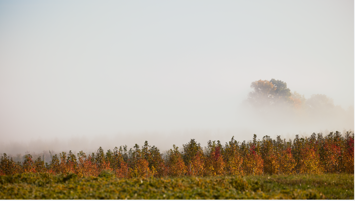In this Urban Affairs article, Kevin Sproule from Davey's Edmonton office shares how zombie trees can occur.
There’s a decent chance that zombies are lurking in your neighborhood. No, not the figurines that your neighbor got at the Spirit of Halloween.
Zombie trees is what we’re getting at.
These are trees that are showing signs that they’re not in the best of shape. Branches have snapped off. Leaves aren’t quite the right color (though this isn’t the best time of year to determine that). The bark is split. The tree could be leaning. These are warnings that the tree is in serious trouble.
A “zombie” is a tree that’s suffering because of windstorms damage or extended droughts. Think of it as storm or drought damage that’s occurring in slow motion. And, because of the changing climate, we’re seeing extended drought conditions in Alberta, punctuated by severe storms. A tree might be showing the effects today from a windstorm that occurred a year or two ago.
“Just speaking anecdotally, I’ve seen some more (zombie trees),” says Kevin Sproule, assistant district manager at Davey Tree Edmonton. “We went through a couple of years of drought-like conditions here in Edmonton, and that’s definitely put stress on trees. They become stressed out and weaker overall. They become less able to handle damage from the weather.”
To read the rest of Kevin's interview, click here.
For more information, contact the Davey Edmonton office.
The Davey Tree Expert Company provides research-driven tree services, grounds maintenance and environmental and utility infrastructure consulting for residential, utility, commercial and environmental partners in the U.S. and Canada. Established in 1880 and headquartered in Kent, Ohio, Davey has over 12,000 employees and is the ninth largest employee-owned company in the U.S. This year, Davey celebrates 45 years of employee ownership – Join us and apply today!





